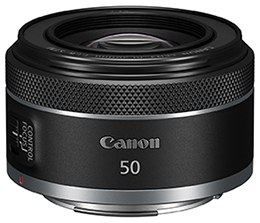50mm Landscapes, My Style: The Lens that Inspires Adventure
What kind of lens do you usually associate with landscape photography? An ultra-wide-angle lens or telephoto zoom lens is probably what comes to mind, but how about a 50mm prime? GOTO AKI shares how using one inspires him to get creative with his angles. (Reported by: GOTO AKI, Digital Camera Magazine)

EOS R5/ RF50mm f/1.8 STM/ Flexible-priority AE (f/5.6, 1/200 sec)/ ISO 1600/ WB: Daylight
Crossing a bridge over the river that ran across a grassland, my eyes were drawn to the abstract patterns created by the tree branches at my feet, layered over its own silhouette reflected in the water. To get the shot, I stepped into the river and framed the image so that only the rippling water was captured. With a 50mm prime lens, you’re more likely to be more mobile, which increases your inclination to be adventurous.
50mm: The joy of exploration and discovery
A 50mm lens covers more of a scene than a telephoto lens, and less of a scene than a wide angle lens. But rather than being limiting, this makes it quite versatile. You take on a more active role in composition shots: instead of turning the zoom ring, you zoom with your feet, stepping nearer your subject or away from it. In this quest for your ideal framing, you make new discoveries, which can be quite fun.
When I’m shooting in grasslands or the mountains, this versatility combined with a large aperture makes it easier to capture images with a nice atmosphere, even in the early morning or evening when it’s dark. The large maximum aperture of a prime lens also makes it easy to create bokeh and achieve an image that is full of emotion.
When the lens is combined with a camera that has good high ISO speed capabilities, I can even use it to take handheld shots of plants and moss in a dark forest.
Pro composition tips, GOTO AKI style

EOS R5/ RF50mm f/1.8 STM/ Flexible-priority AE (f/8, 1/640 sec)/ ISO 400/ WB: Daylight
Use your body and play with the aperture
With a 50mm prime lens, you change the way subjects are captured by using your body to shoot.
For example, when photographing landscapes, if you move closer and open up the aperture, the background goes out of focus and the image will resemble something shot with a telephoto lens. And if, instead of opening up, you narrow the aperture like I did for the image above, you will be able to capture the fine details of your subject’s form and texture.
Meanwhile, if you move further away from the subject and set the aperture to around f/11 to f/16, you can create images that resemble deep focused images shot on a wide-angle lens.
To sum up:
- Move closer and use a wider aperture to achieve a telephoto-like look
- Move closer and use a narrow aperture to capture form and texture
- Move away and shoot around f/11 to f/16 to achieve a wide-angle-like look
Use your body and manoeuvre the aperture—to me, those are the two most important points for using a 50mm lens to its fullest advantage.
More tips on using a 50mm lens in:
50mm Portraits, My Style: Creating A Picture of a Memory
Lens used

RF50mm f/1.8 STM
In the RF lens series, even the STM (Stepping Motor) lenses are sharp. The RF50mm f/1.8 STM offers a wide maximum aperture within a compact body, and such portability makes it a great walkaround lens.
Also see:
RF50mm f/1.8 STM vs EF50mm f/1.8 STM: 6 Key Comparisons
Lens Review: RF50mm f/1.8 STM in Street Photography
More ideas for finding creative new angles in:
The Matrix Method: A Systematic Way to Add Variety to Your Shots
3 Deceptively Simple Challenges to Level Up Your Photography Skills
Receive the latest update on photography news, tips and tricks.
Be part of the SNAPSHOT Community.
Sign Up Now!About the Author
Born in 1972 in Kanagawa Prefecture and graduated from Sophia University and Tokyo College of Photography. Goto published a photo collection work titled "LAND ESCAPES" and is also actively engaged in works such as “water silence” an installation that merges photographs with videos.
A monthly magazine that believes that enjoyment of photography will increase the more one learns about camera functions. It delivers news on the latest cameras and features and regularly introduces various photography techniques.
Published by Impress Corporation































.jpg)


